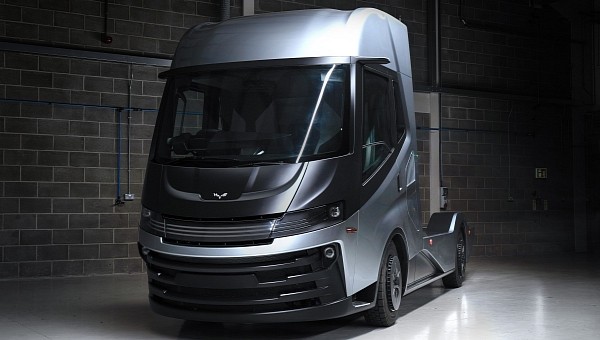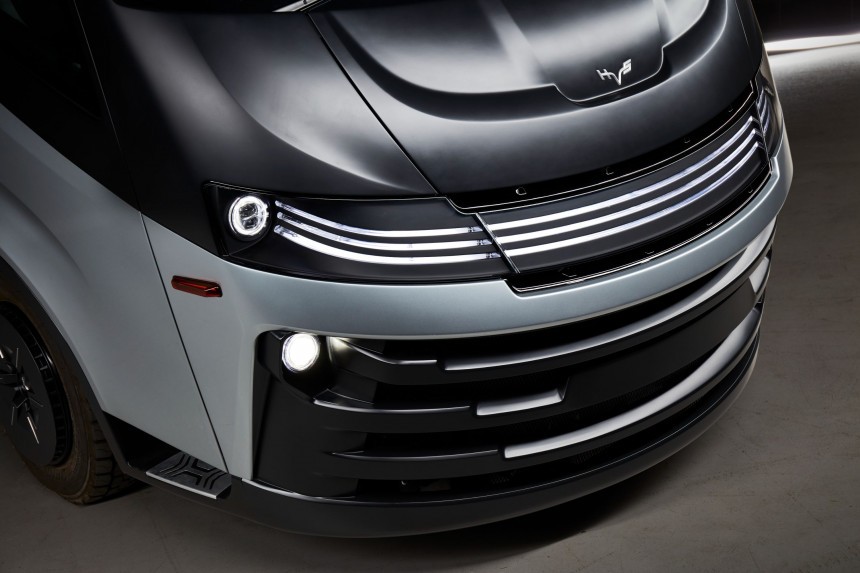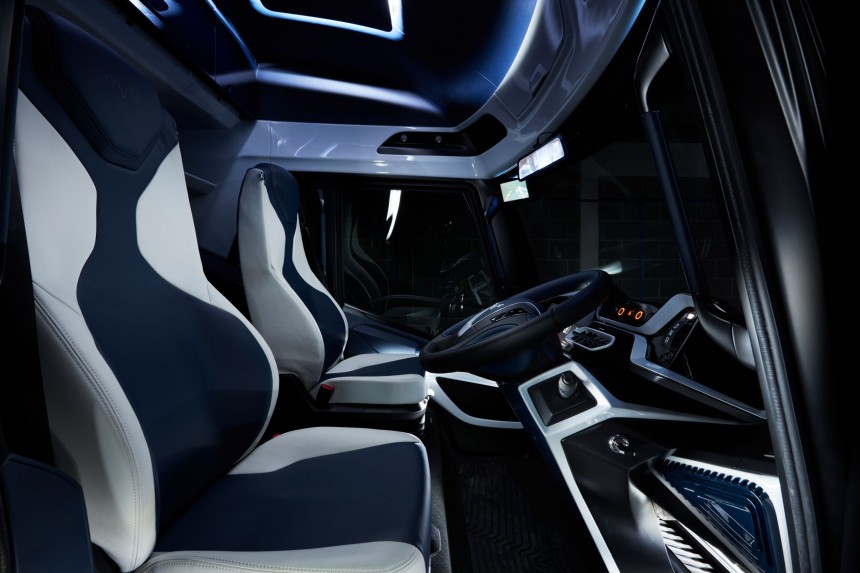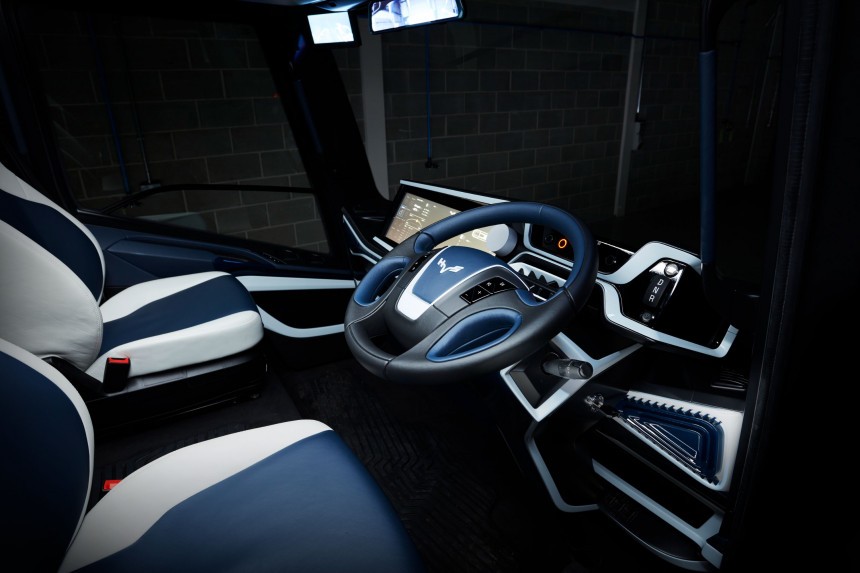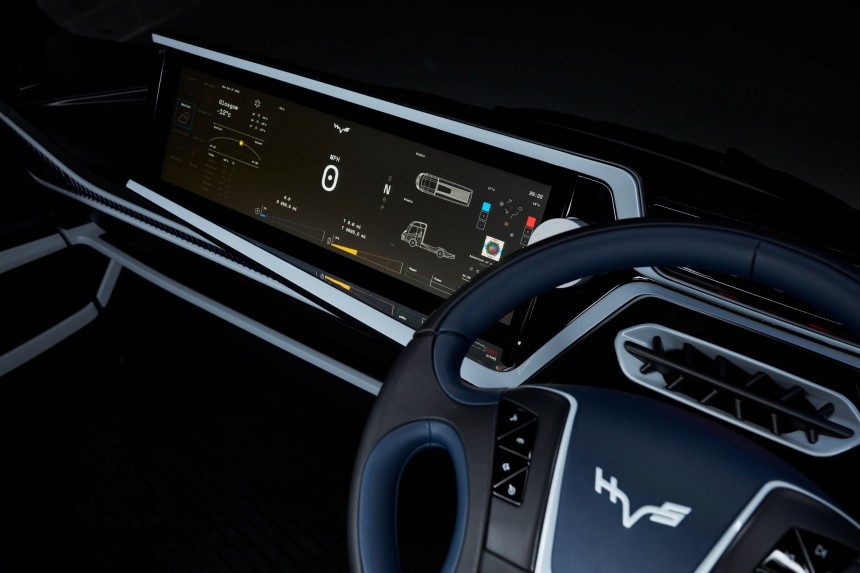The automotive industry is exploring alternative methods of powering vehicles besides electrification – one of them is hydrogen combustion. Although it’s definitely not as popular, it’s still a viable option, especially for commercial vehicles. One hydrogen-powered commercial vehicle manufacturer, HVS (Hydrogen Vehicle Systems), announced that the UK government awarded £6.6M ($8.17M) in funding to develop world’s first self-driving hydrogen HVG (Heavy Goods Vehicle).
You read that right: hydrogen combustion and self-driving features, all in the same vehicle. Let’s see what it’s all about. First, let me tell you more about HVS - the company is based in the UK and aims to disrupt the commercial vehicle industry by providing all-new, zero-emission HGVs. It’s currently working on two vehicles, one medium and one heavy.
The company leads a consortium named Hub2Hub, which is also made up of Fusion Processing Ltd, a maker of vehicle automation systems, and ASDA, a major UK retailer. Hub2Hub received £6.6M to manufacture a self-driving heavy goods tractor unit. Vehicle trials will begin in 2024, and ASDA will serve as a strategic partner to support end-user needs. Even though an autonomous lorry will probably be a significant investment for companies, it will eventually reduce overall operation costs, as well as lower emissions. Furthermore, the hope is that this cost reduction will drive the freight sector to adopt zero-emission vehicles rapidly.
HVS unveiled its plans to enter the haulage industry when it revealed its innovative hydrogen-electric powertrain technology demonstrator in November 2022. UK’s CCAV (Center for Connected and Autonomous Vehicles) and CAM (Connected and Automated Mobility) programs have granted £3.4M ($4.21M) to HVS as part of a total of seven grants.
The consortium will produce two prototype vehicles that enable Level 4 autonomous driving. The first hydrogen-electric HGV prototype will be equipped with a driver’s cab. It will be taken on the road to test its autonomous operation via Fusion Processing Ltd’s Automated Drive System, CAVStar. Other road users won’t be in danger, as there will be a human safety driver behind the wheel, just in case.
The second prototype won’t come with a driver’s cab – instead, it will feature an aerodynamic fairing. The vehicle will be taken on test tracks, where a remote human driver will operate the car from a control hub through the CAVStar system.
There’s a logic behind these tests – the idea is that the future of logistics might be one where vehicles can be operated autonomously from hub to hub. Then a remote driver could take over to pilot it to its end destination. Now, you can also understand the meaning behind the consortium’s name.
There are two goals for the groundbreaking HGVs: to decarbonize one of the most significant polluting vehicle sectors on the road, as well as develop Hub-to-Hub automated driving technology. This is also an opportunity to test the feasibility of these technologies for commercial scalability.
Of course, these developments aren’t possible without the approval and support of the government. Luckily, the UK government recognizes the opportunity and is keen to seize it. UK’s Secretary of State for Business, Energy and Industrial Strategy, Grant Shapps, declared that the business of self-driving vehicles could add tens of billions to the country’s economy, as well as create tens of thousands of jobs in just a few years. Nowadays, when people hear about robots or artificial intelligence, they associate it with the loss of jobs, so it’s interesting to see how the new developments will affect the economy.
The CEO of Fusion Processing, Jim Hutchinson, declared that the company’s market analysis indicated that the commercial vehicle segments are where the autonomous vehicle technology will be first utilized in large-scale deployments. Combining SAE Level 4 autonomous driving with teleoperation aims to deliver safer and more efficient vehicle operations, especially in the haulage and logistics sectors.
So, how can this system achieve such impressive feats? It integrates groundbreaking sensor technology within the vehicle, specifically an array of radars, cameras, LIDARs, and artificial intelligence.
The application of the advanced system can be a next-gen solution for the current issues in the haulage industry. First of all, it can offer unprecedented operational safety without human intervention. Second, drivers’ quality of life can be significantly improved – by using teleoperation, drivers can stay local and have less intensive shifts, leading to a better work-life balance. What’s more, the issue of driver shortages can also be addressed.
Regarding fleet operators, there are also several advantages: vehicles can avoid congestion by being utilized during less busy hours, and automated driving systems can improve the vehicles’ efficiency during their journey. What I mean is that the systems will choose the optimum times to accelerate and brake better than any human could, and thus energy and tire emissions can be reduced.
New business models will emerge from the integration of this technology. Furthermore, by creating automated haulage hubs and depots, operators can improve space usage while upgrading safety and efficiency.
The company leads a consortium named Hub2Hub, which is also made up of Fusion Processing Ltd, a maker of vehicle automation systems, and ASDA, a major UK retailer. Hub2Hub received £6.6M to manufacture a self-driving heavy goods tractor unit. Vehicle trials will begin in 2024, and ASDA will serve as a strategic partner to support end-user needs. Even though an autonomous lorry will probably be a significant investment for companies, it will eventually reduce overall operation costs, as well as lower emissions. Furthermore, the hope is that this cost reduction will drive the freight sector to adopt zero-emission vehicles rapidly.
HVS unveiled its plans to enter the haulage industry when it revealed its innovative hydrogen-electric powertrain technology demonstrator in November 2022. UK’s CCAV (Center for Connected and Autonomous Vehicles) and CAM (Connected and Automated Mobility) programs have granted £3.4M ($4.21M) to HVS as part of a total of seven grants.
The second prototype won’t come with a driver’s cab – instead, it will feature an aerodynamic fairing. The vehicle will be taken on test tracks, where a remote human driver will operate the car from a control hub through the CAVStar system.
There’s a logic behind these tests – the idea is that the future of logistics might be one where vehicles can be operated autonomously from hub to hub. Then a remote driver could take over to pilot it to its end destination. Now, you can also understand the meaning behind the consortium’s name.
Of course, these developments aren’t possible without the approval and support of the government. Luckily, the UK government recognizes the opportunity and is keen to seize it. UK’s Secretary of State for Business, Energy and Industrial Strategy, Grant Shapps, declared that the business of self-driving vehicles could add tens of billions to the country’s economy, as well as create tens of thousands of jobs in just a few years. Nowadays, when people hear about robots or artificial intelligence, they associate it with the loss of jobs, so it’s interesting to see how the new developments will affect the economy.
The CEO of Fusion Processing, Jim Hutchinson, declared that the company’s market analysis indicated that the commercial vehicle segments are where the autonomous vehicle technology will be first utilized in large-scale deployments. Combining SAE Level 4 autonomous driving with teleoperation aims to deliver safer and more efficient vehicle operations, especially in the haulage and logistics sectors.
The application of the advanced system can be a next-gen solution for the current issues in the haulage industry. First of all, it can offer unprecedented operational safety without human intervention. Second, drivers’ quality of life can be significantly improved – by using teleoperation, drivers can stay local and have less intensive shifts, leading to a better work-life balance. What’s more, the issue of driver shortages can also be addressed.
Regarding fleet operators, there are also several advantages: vehicles can avoid congestion by being utilized during less busy hours, and automated driving systems can improve the vehicles’ efficiency during their journey. What I mean is that the systems will choose the optimum times to accelerate and brake better than any human could, and thus energy and tire emissions can be reduced.
